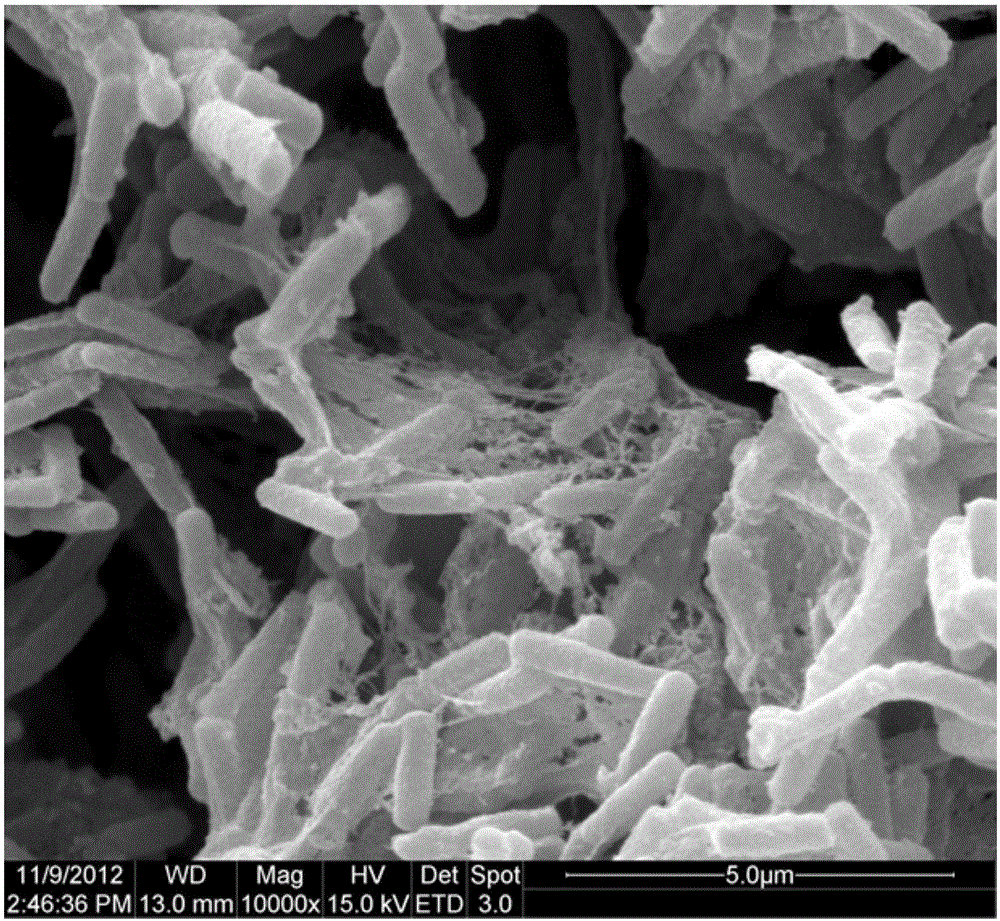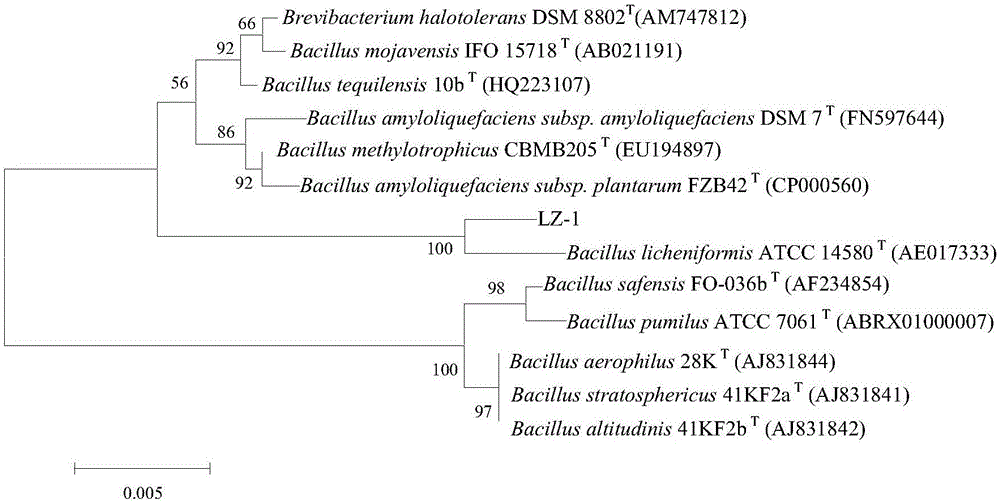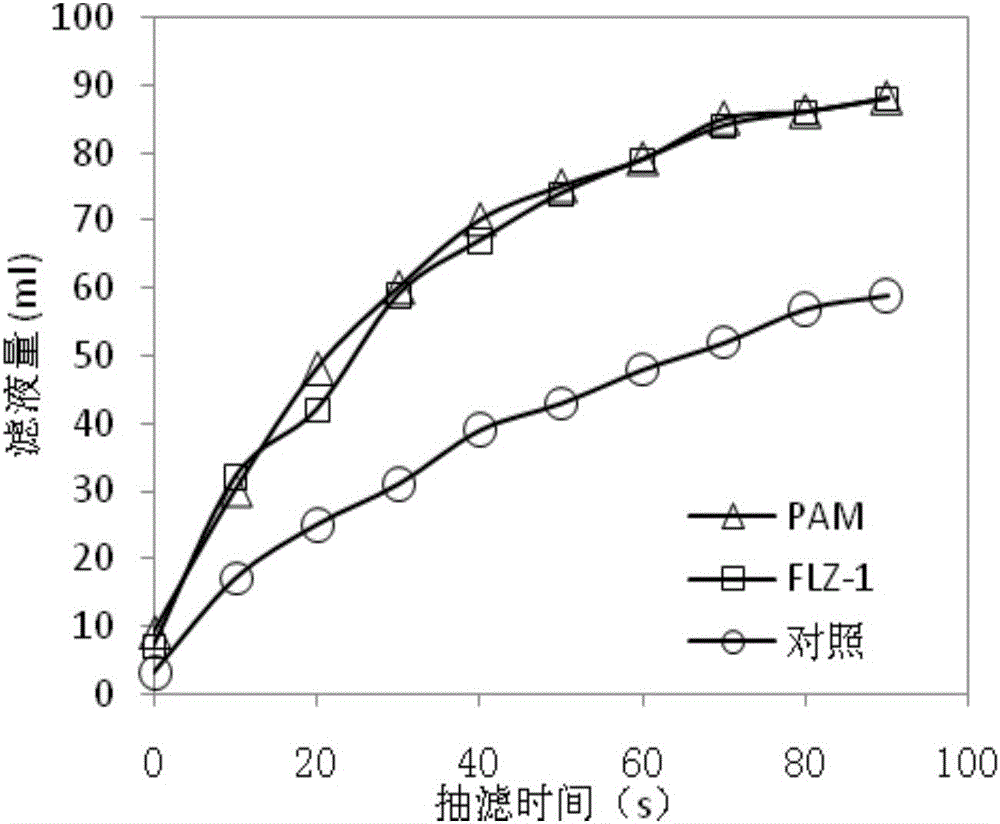Bacillus licheniformis, method for preparing flocculating agent from bacillus licheniformis and application of flocculating agent
A technology of Bacillus licheniformis and flocculants, applied in the field of microorganisms, can solve problems such as poor soil air permeability, increased sludge hardness, and soil compaction, and achieve the effects of wide growth temperature range, low production cost, and high flocculation activity
- Summary
- Abstract
- Description
- Claims
- Application Information
AI Technical Summary
Problems solved by technology
Method used
Image
Examples
Embodiment 1
[0030] Embodiment 1, isolation and screening of Bacillus licheniformis (Bacillus licheniformis) LZ-1
[0031]The strain of the present invention was isolated and purified from the activated sludge of a wood pulping sewage treatment plant in Jiaozuo, Henan Province in 2012. The isolation of bacterial strains is done by diluting 1mL of activated sludge 10 times, then taking 0.2mL of the diluted solution and spreading it on a solid medium plate for separation. After culturing at 37°C for 3 days, pick a single colony and streak it several times on the same medium plate. , until pure species were obtained by microscopic examination.
[0032] The isolated pure strain was planted on the solid plate of the selection medium, and cultured at 37°C for 2 days. Pour 1% methyl red indicator reagent on the surface of the solid plate, react for 30 minutes, then add 1mol / L NaCl solution for decolorization, after reacting for 30 minutes, pour out the liquid, observe the hydrolysis circle aroun...
Embodiment 2
[0036] Embodiment 2, the morphology and physiological and biochemical characteristics of Bacillus licheniformis (Bacillus licheniformis) LZ-1
[0037] (1) Strain morphology observation:
[0038] Colony shape: Dilute the liquid culture of strain LZ-1 on a solid medium plate and culture it for 2 days. The colony is flat, round or nearly round, milky white, opaque, and about 2mm in diameter.
[0039] Morphological characteristics: use optical microscope and scanning electron microscope to observe the morphology of bacterial cells. The cells are rod-shaped (see figure 1 ), the size is about 1.5~2.0×0.5μm. The cells of the strain LZ-1 produced spores, the cysts were slightly enlarged, and there were no paraspore crystals.
[0040] (2) Physiological and biochemical characteristics of the strain:
[0041] Growth characteristics: The strain has the characteristics of wide growth temperature range and alkali resistance, and can grow under the conditions of 28°C-50°C and pH 8-11.
...
Embodiment 3
[0049] Embodiment 3, 16S rRNA gene sequence PCR amplification and sequence analysis of Bacillus licheniformis LZ-1
[0050] The strain LZ-1 was inoculated in the basal medium, and after 3 days of culture, the bacteria were collected by centrifugation, washed with buffer, and lysozyme was added to break the cells, and the genomic DNA was extracted by phenol: chloroform extraction, and the obtained DNA was used as a template , the 16S rRNA gene of strain LZ-1 was amplified by bacterial forward primer 27-F (5'-AGAGTTTGATCCTGGCTCAG-3') and reverse primer 1492-R (5'-GGTTACCTTGTTACGACTT-3'). PCR reaction system (100μl): 10μl of 10×Taq enzyme buffer, 25mmol / L MgCl 2 6μl, 10mmol / L dNTP 2μl, Taq DNase 2.5U, 30pmol / L upstream and downstream primers 2μl each, template DNA 2μg, distilled water to make up to 100μl. The PCR reaction conditions were: 95°C for 5min, 95°C for 1min, 58°C for 5min, 72°C for 1.5min, 30 cycles, 72°C for 10min, and storage at 4°C. The amplified products were sepa...
PUM
| Property | Measurement | Unit |
|---|---|---|
| molecular weight | aaaaa | aaaaa |
| polydispersity index | aaaaa | aaaaa |
| polydispersity index | aaaaa | aaaaa |
Abstract
Description
Claims
Application Information
 Login to View More
Login to View More - R&D
- Intellectual Property
- Life Sciences
- Materials
- Tech Scout
- Unparalleled Data Quality
- Higher Quality Content
- 60% Fewer Hallucinations
Browse by: Latest US Patents, China's latest patents, Technical Efficacy Thesaurus, Application Domain, Technology Topic, Popular Technical Reports.
© 2025 PatSnap. All rights reserved.Legal|Privacy policy|Modern Slavery Act Transparency Statement|Sitemap|About US| Contact US: help@patsnap.com



